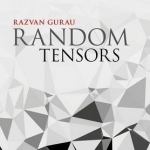Random Tensors
BookThis item doesn’t have any media yet
2016 | Science & Mathematics
Written by the creator of the modern theory of random tensors, this book is the first self-contained introductory text to this rapidly developing theory. Starting from notions familiar to the average researcher or PhD student in mathematical or theoretical physics, the book presents in detail the theory and its applications to physics. The recent detections of the Higgs boson at the LHC and gravitational waves at LIGO mark new milestones in Physics confirming long standing predictions of Quantum Field Theory and General Relativity. These two experimental results only reinforce today the need to find an underlying common framework of the two: the elusive theory of Quantum Gravity. Over the past thirty years, several alternatives have been proposed as theories of Quantum Gravity, chief among them String Theory. While these theories are yet to be tested experimentally, key lessons have already been learned. Whatever the theory of Quantum Gravity may be, it must incorporate random geometry in one form or another. This book introduces a framework for studying random geometries in any dimensions.
Building on the resounding success of random matrices as theories of random two dimensional surfaces, random tensors are their natural generalization to theories of random geometry in arbitrary dimension. This book shows that many of the celebrated results in random matrices, most notably 't Hooft's 1/N expansion, can be generalized to higher dimensions. It provides a complete and self-contained derivation of the key results on random tensors.
Related Items:
| Published by | Oxford University Press |
| Edition | Unknown |
| ISBN | 9780198787938 |
| Language | N/A |
Images And Data Courtesy Of: Oxford University Press.
This content (including text, images, videos and other media) is published and used in accordance
with Fair Use.
